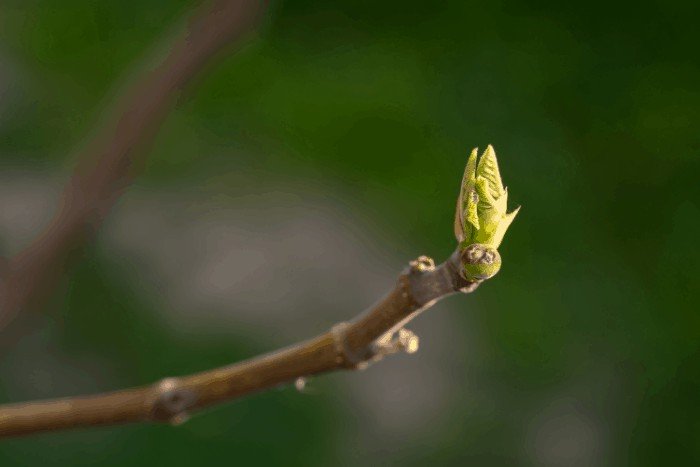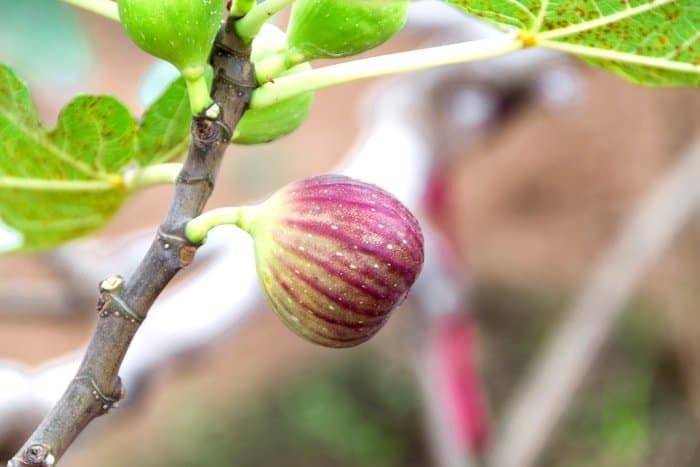Last Updated on December 29, 2021 by
Figs are a sweet and mild fruit that has been popular throughout human history because of its ability to be propagated and grow in difficult climates. Individuals who don’t live in arid regions might not have access to seeds. So learning how to grow a fig tree from a cutting directly in the ground can be a necessary skill for getting this amazing fruit.
Since the fig possesses numerous health benefits thanks to its vitamins and nutrients, it is also a great addition to any garden. Fig cuttings can be taken from an existing tree and are sometimes sold in garden stores, so acquiring the cuttings tends to be easier than trying to find the seeds and growing them for scratch. This comprehensive guide seeks to explain just how the growth of a fig tree is possible in temperate environments and will answer many of the questions you might have about propagating this lovely fruit.
How to Grow a Fig Tree From a Cutting: What You Will Need
The first evidence of fig cultivation is from 5,000 BCE, or over 7,000 years ago. Early humans discovered that planting fig cuttings was an excellent way to produce a healthy tree, and created a simple process for the propagation.
Since humans have been cultivating figs for thousands of years, you actually don’t need any complex equipment or specialized tools for planting. Instead, you will need:
- Multiple fig cuttings
- A trowel
- Plant sealant
- Rooting hormone
- Sandy clay loam for soil
Figs can actually grow in almost every soil type and can even survive in temperatures as low as 10 degrees Fahrenheit. To have the healthiest tree, though, try to keep the soil sandy and avoid environments where the temperature could drop below 50 degrees Fahrenheit. Once the climate starts to freeze, the root system of the tree can be affected, and the figs might not grow during the next season.
How to Grow a Fig Tree From a Cutting: Instructions
Fig cuttings can be rooted indoors or outdoors through a similar process. The key is, once the cuttings have been planted, to supply the tree with plenty of water and natural sunlight so the cuttings can develop roots and start to grow in their new environment. Remember to treat with the sealant and rooting hormone for the best results.
-
Take and Treat the Cuttings
Fig cuttings can be acquired in several ways. Some people prefer to cut them themselves, but this isn’t always an option. So, some individuals might need to purchase the cuttings from a neighbor, a local garden store, or online.
Someone who takes the cuttings themselves will want to do so during the dormant season. The branches should be 2 to 3 years old and ½-¾ in. thick. Anything thinner is unlikely to survive the planting process. This cutting should be around 8-12 in. long, with the base cut straight and the tip cut as a slant.
Once the cuttings are taken, the tip needs to be treated with the sealant and the base should have rooting hormone applied. This will protect the fig and help it grow.
-
Plant the Cuttings
When the cuttings have been treated, they are ready to plant. Most gardeners recommend planting between 6 and 8 cuttings since some of them are unlikely to survive the process. The flat base of the cuttings should rest 6 in. below the surface of the ground and be planted at least 12 in. away from any other plants. This will give the fig tree the space it needs to grow and thrive. Repeat this process for all cuttings.
-
Provide Water and Sunlight
Fig trees may grow in arid areas, but they will still require regular watering. Since the fig should be planted in arid soil, try to keep watering limited to only every couple of weeks. It is possible for the cutting to experience a mild form of transplant shock, so don’t be surprised if it doesn’t grow right away.
When it comes to exposure to sunlight, the cuttings will need a hefty dose of rays. Most fig trees grow well when receiving at least 8 hours of sunlight a day, so plant the cuttings in a bright spot that will be unaffected by background shade.
If all goes well, you can expect the cuttings to grow between 36 and 48 in. during the first year.
How to Grow a Fig Tree From a Cutting: Additional Tips and Tricks
Although they are not common in temperate zones, fig trees are surprisingly resilient and durable. Unlike the banana tree or finicky flowers like orchids, the fig is unlikely to test the gardener’s patience and leave them frustrated. Still, there are a couple of additional tips and tricks that can help this plant grow.
- Use soil between a pH of 6.0 and 8.0
- Plant common figs since they don’t require pollination
- Avoid using a ton of fertilizer
- Don’t plant fig trees closer than 10 ft. apart
- Resist the urge to over-water
- Protect the tree from the cold by using blankets and covers
It’s important to remember that you probably won’t receive your first crop of healthy, delicious figs until the cuttings have matured into a full tree after two years. During the early years of its life, the tree might require some extra protection, especially in cool climates. However, avoid fussing over the cuttings, since a leading cause of death for the fig is too much water, fertilizer, and pruning during the early stages of life.
Conclusion
Figs don’t have to just belong in the newton anymore. Once you learn how to grow figs by planting the cuttings directly in the ground, you can enjoy this mild and delicious fruit at any time from your own backyard. Just remember to seal and treat the cuttings properly, and they will reward you by becoming healthy and strong in no time.
FAQs
How long does fig cuttings take to root?
Fig cuttings take anywhere from 3 to 6 weeks to root depending on the temperature and the soil.
Fig cuttings are simple to grow at home, but they often take a while to finally create roots. That’s because fig cuttings need more water and nutrients than other plants, and if the right conditions aren’t met, it can be hard for figs to establish themselves.
Can you root fig tree cuttings in water?
The answer is yes, but the process takes a little more time. You will need to soak the cuttings until they take root. This process can take up to 3 weeks depending on how deep the roots go into the soil.
Can you start a fig tree from a branch?
The answer is yes. You can start a fig tree from a branch by placing the branch in soil and watering it. After that, you'll need to keep the branch moist and warm. However, you shouldn't water the branch every day because it will become waterlogged and eventually die if you do this for too long.
How do you plant a fig tree in the ground?
Fig trees are a popular tree that can thrive in warmer climates. There are several ways of planting fig trees, but the most popular and natural method is to plant them in the ground.
The easiest way to plant a fig tree is to dig a hole that is two feet deep and four feet wide. Make sure the soil you use is well-drained, not too wet or too dry, and then add compost or fertilizer before back filling with soil.
Most fig trees prefer partial shade so if possible, place your tree on a south-facing slope where it will receive filtered sunlight throughout the day.
How do you fertilize ground figs?
Ground figs are plant that can be grown in containers. They are a succulent plant and need to be watered deeply daily because of their porous roots.
Fertilizing ground figs: You'll need to add a layer of compost on the surface of the pot, then water the soil well before adding your new plants. Place the plant in a container filled with moistened potting soil and place it in a bright location away from direct sunlight and drafts.
Some people say that you can fertilize ground figs with coffee grounds or eggshells, but this is not recommended. Use organic fertilizer such as chicken manure or blood meal instead, as these ingredients have high nitrogen levels and promote root growth.
Is Epsom salt good for fig trees?
Fig trees are often used as landscape or horticultural plants. They need a lot of water to survive and need a soil that is light-textured or very well-drained. Is Epsom salt good for fig trees?
Epsom salt is a good option to use on your fig tree. It helps the trees fight off certain diseases and boosts the overall health of the plant.
We can use Epsom salt to prevent fig trees from getting too much water, which can cause damages like splitting and cracking that may damage the tree.
Epsom salt can help to improve plant growth and increase plant vigor. It can also serve as a soil conditioner when used in the right amount. However, too much Epsom salt can potentially harm plants by causing some salts to leach into water sources and soil.
Tony Manhart is a passionate gardener who has been tending to gardens for over 20 years. He takes pride in creating beautiful outdoor spaces with plants, trees, and shrubs that can thrive in any environment. He loves to share his knowledge with others and has taught classes on gardening basics and advanced techniques. He is committed to sustainability, using natural and organic methods to create and maintain gardens. He also works with local organizations to create green spaces for communities. When he’s not gardening, Tony enjoys hiking, reading, and spending time with his family.





